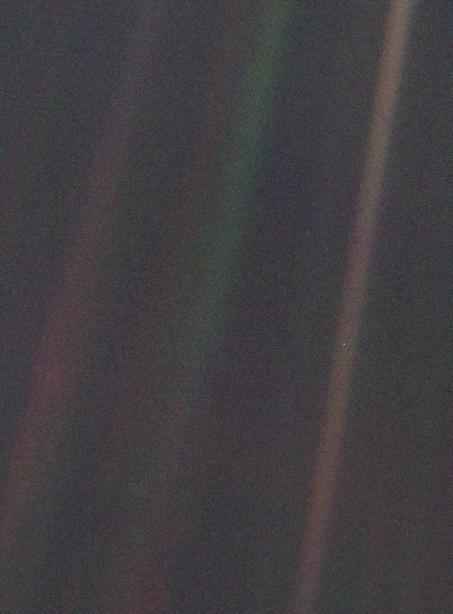On February 14, 1990, NASA‘s Voyager 1 captured a groundbreaking photograph — a view of our planet from a staggering distance of 3.7 billion miles (6 billion kilometers). This moment crystallized the essence of humanity in a mere fragment of a pixel, adrift in a vast expanse of darkness, aptly termed the “Pale Blue Dot.”
The late Carl Sagan, renowned astronomer, writer, and science communicator, played a pivotal role in making this iconic image possible. Sagan, best known for his critically acclaimed TV series, “Cosmos: A Personal Voyage,” contributed significantly to the Voyager mission.
As a member of the Voyager team, Sagan was instrumental in crafting the Golden Records that accompany the Voyager probes, containing treasured aspects of human culture and messages of goodwill for any extraterrestrial beings that might encounter them in the future. Following the launch of Voyager 1 in 1977, Sagan proposed capturing an image of Earth during its voyage through the outer reaches of the solar system.
The endeavor to capture this powerful image took ten years of meticulous planning, according to The Planetary Society. The project faced challenges related to safeguarding the spacecraft’s sensitive cameras and dealing with staff layoffs. Nevertheless, after Voyager 1 took the snapshot beyond Neptune’s orbit, it recorded the image and transmitted it to Earth in segments over a span of three months, as indicated by a newspaper article Sagan penned for the Prescott Courier (now the Daily Courier) in 1990.
Related: Stunning pictures of Earth from space
In his 1994 book Pale Blue Dot, Sagan’s eloquent reflection on this photograph remains as significant and profound today as it was at the time of its release.
“Look again at that dot. That’s here. That’s home. That’s us,” Sagan expressed. “On it, everyone you love, everyone you know, and every human being who ever lived out their lives, all reside.”
“Every hunter and gatherer, every courageous person and coward, every creator and destroyer of civilizations, every ruler and peasant, every loving couple, every parent, every hopeful child, inventor, and explorer, every moral teacher, every corrupt politician, every celebrity, every supreme leader, every saint and sinner in the history of our species lived there — on a tiny speck of dust suspended in a sunbeam.”

Fast forward thirty-five years, and both Earth and the Voyager probes have undergone significant changes. Currently, Voyager 1 is now more than 15.5 billion miles (25 billion km) away from Earth, a distance that is four times greater than when that famed photo was taken. Remarkably, it continues to relay scientific data to us from the vastness of interstellar space, albeit with some technical challenges.
Sadly, interstellar space has revealed itself to be rather desolate, meaning Voyager 1 will once again be spending Valentine’s Day in solitude. Let us hope that we on Earth can send some love to the spacecraft that provided us with an extraordinary visual perspective of our delicate and magnificent planet.









